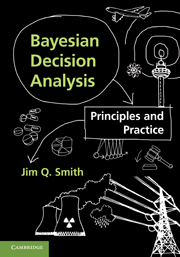Book contents
4 - Subjective probability and its elicitation
from Part I - Foundations of Decision Modelling
Published online by Cambridge University Press: 05 June 2012
Summary
Defining subjective probabilities
Introduction
So far we have taken the concept of a subjective probability as a given. But what exactly should someone mean by a quoted probability? There are three criteria that such a definition needs satisfy if we are not to subverting the term “probability” for another use:
(1) In circumstances when a probability value can be taken as “understood” by a typical rational and educated person our definition must correspond to this value.
(2) The definition of subjective “probability” on collections of events should satisfy the familiar rules of probability, at least for finite collections of events.
(3) The magnitude of a person's subjective probability of an event in a decision problem must genuinely link to her strength of belief that the event might occur. For consistency with the development given so far in this book it would be convenient if this strength of belief were measured in terms of the betting preferences of the owner of the probability judgement.
To satisfy the first point above recall that there are various scenarios where the assignment of probabilities to events are uncontentious to most rational people in this society. It is therefore reasonable to assume that the DM's subjective probabilities agree with such commonly held probabilities. For example most people would be happy to assign a probability of one half to the toss of a fair coin resulting in a head. Two slightly more general standard probabilistic scenarios where common agreement exists are as follows.
- Type
- Chapter
- Information
- Bayesian Decision AnalysisPrinciples and Practice, pp. 103 - 130Publisher: Cambridge University PressPrint publication year: 2010
- 1
- Cited by



